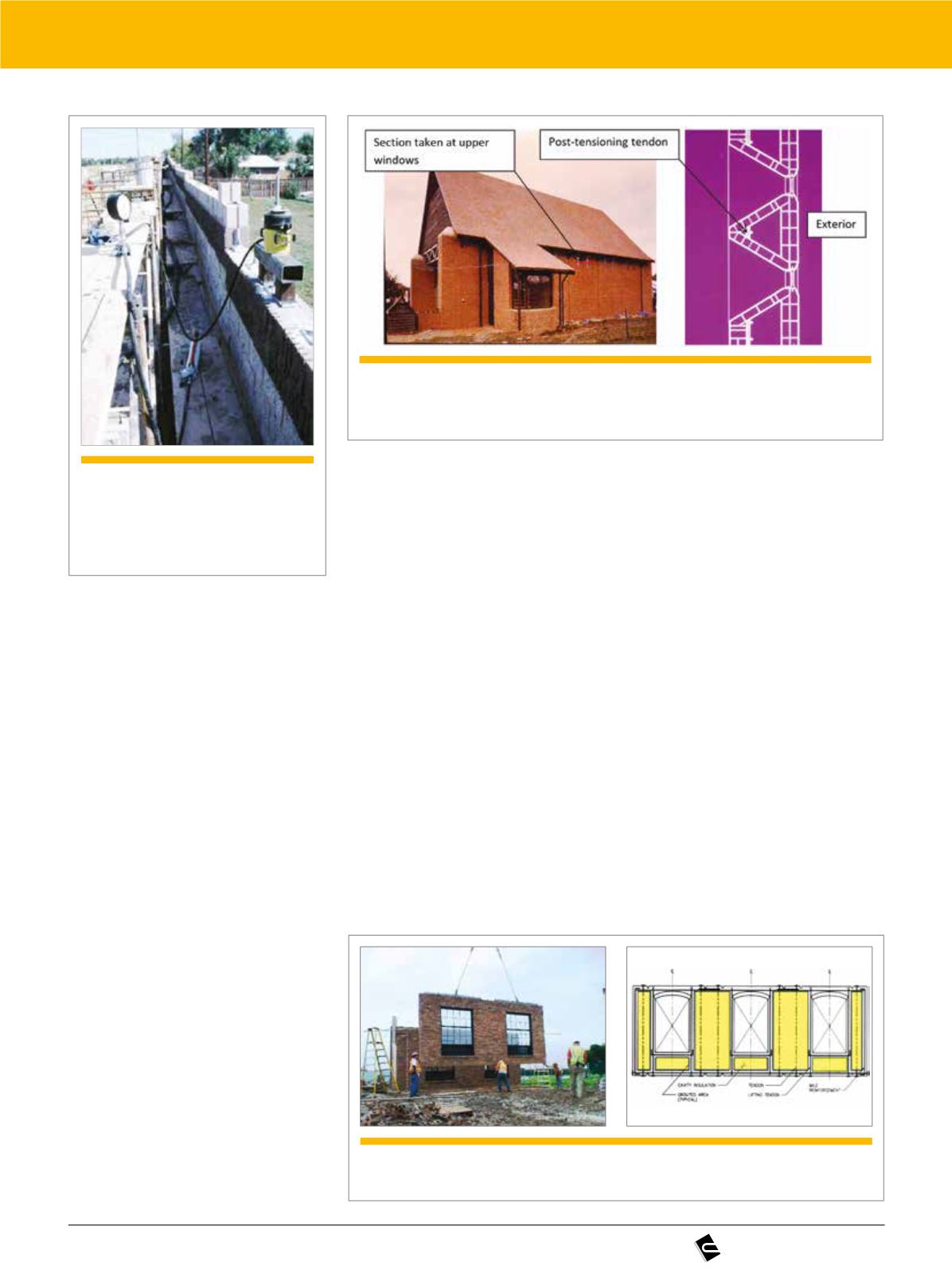
CONCRETO & Construções | 139
to overturning effects. Some research-
ers have expressed a concern that the
post-tensioning force increases the
chance of buckling on the ends of
the partially grouted shear walls. So,
current US standards in high seismic
zones currently require that post-ten-
sioned shear walls also be fully grouted
with supplemental mild reinforcement
until new research provides a better
solution for the performance of partially
grouted walls.
RETAINING WALLS AND SOUND
BARRIER WALLS
These walls are again ideal for
post-tensioning because they are
primarily flexure-dominated with little
concerns for in-plane shear. They are
found on retaining walls, wing walls
of bridges and sound barriers. The
design is relatively straightforward.
However, the corrosion protection of
the tendons is most important. The
walls must be properly flashed and
drained. In addition, retaining walls
must be properly waterproofed on the
earth side.
While most building walls are
post-tensioned concentrically, that
need not be the case for all walls. It
is more reasonable to post-tension
a retaining wall to better accommo-
date the overturning of the wall due
to earth loads.
Figure 4 shows one highway bar-
rier wall under construction. The ten-
dons are concentric due to wind and
seismic loads. Vehicle impact loads
need to accounted for in only one
direction.
GEOMETRIC WALLS
While most masonry post-tension-
ing is used in walls built with single
leaf units that are rectangular, multi-
leaf walls can be created with variable
section profiles to utilize the geometry
of the wall section to greater effect.
Figure 5 shows a project in England
where an historic roof structure was
saved and placed on new brick walls.
The outward thrust at the top of the
sidewalls that was produced by the
arch-shaped roof structure is resisted
by the eccentric tendons in the multi-
leaf wall. That eccentricity of the ten-
dons coupled with a geometric cross-
section with an eccentric centroid was
used for structural advantage. This
highlights a significant advantage of
masonry over other materials in being
able to create geometric sections with
multi-leaf walls.
u
Figura 4
Sound barrier wall being
post-tensioned
(Photograph: David Woodham,
Atkinson Noland Assoc.)
u
Figura 5
Arched roof and multi-leaf walls with eccentric post-tensioning
(Photograph and figure: Malcolm Phipps)
u
Figura 6
Prefabricated wall panel with vertical post-tensioning


